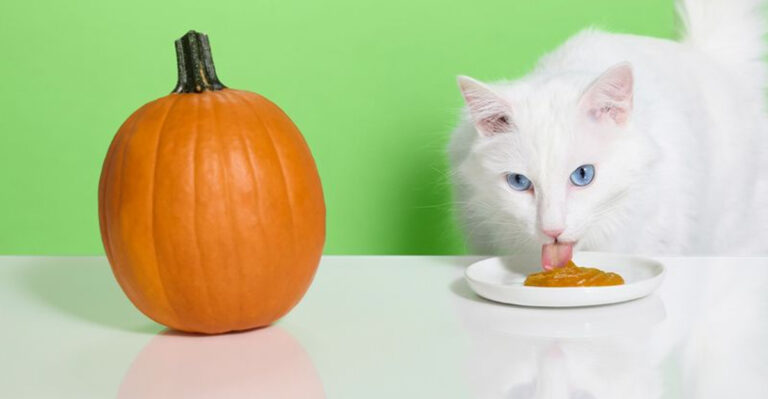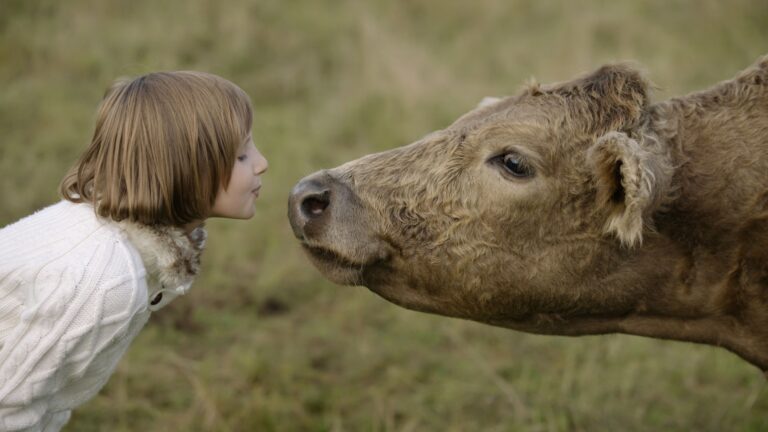The Essential Care Guide For Pet Corn Snakes
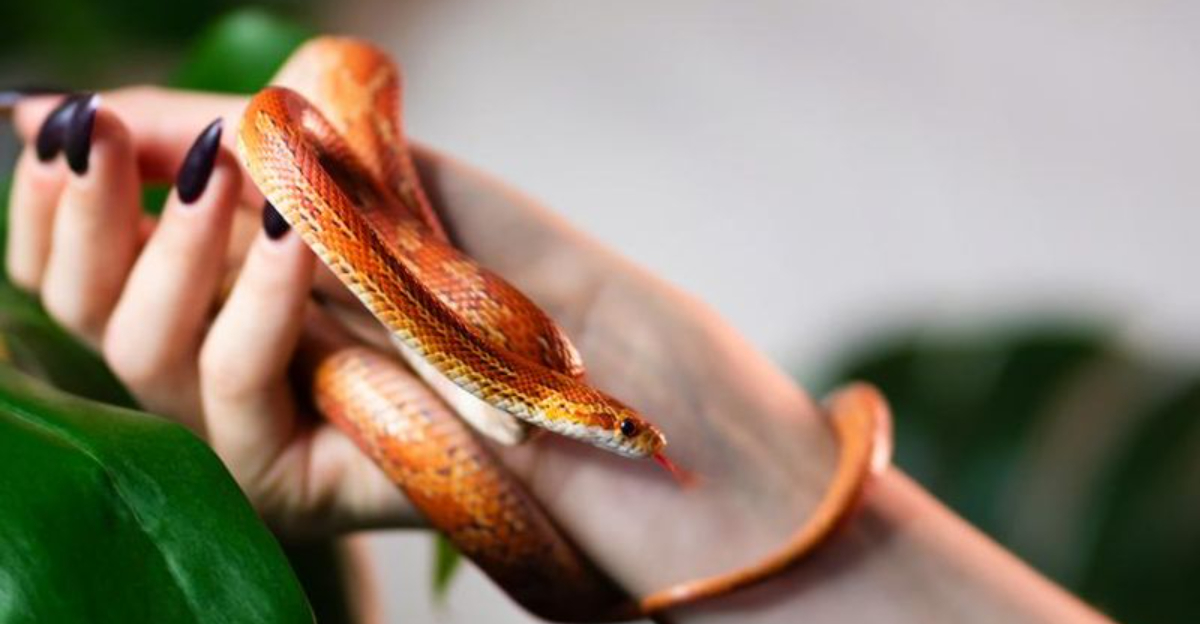
Imagine having a pet that requires no daily walks, makes zero noise, and fits comfortably in a small space! Corn snakes make fantastic first-time reptile companions with their docile temperament and striking patterns.
Whether you’re a reptile newbie or considering adding to your scaly family, mastering these ten essential care steps will ensure your corn snake thrives for up to 20 years in your care.
Set Up The Perfect Habitat
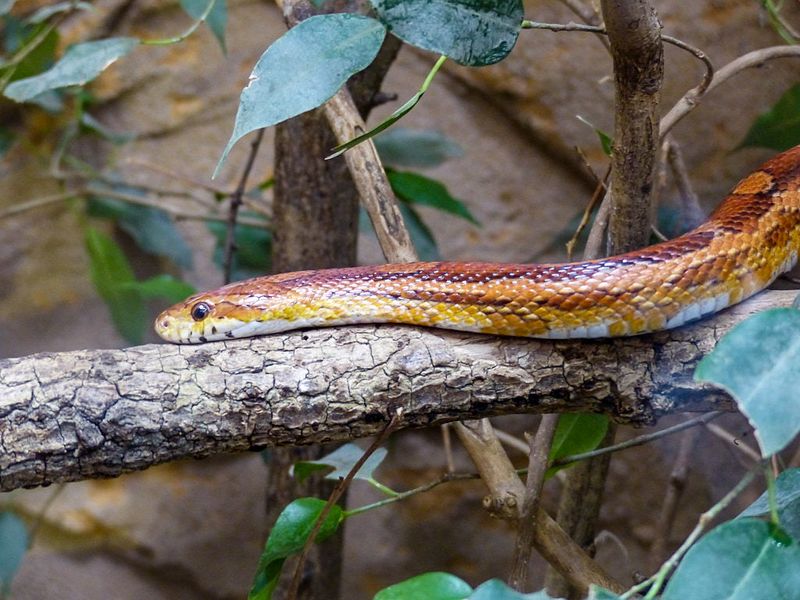
A 20-gallon terrarium works magic for young corn snakes, while adults need at least 40 gallons to stretch out properly. Glass enclosures with secure, screen tops prevent escapes from these notorious Houdinis.
Include several hiding spots on both the warm and cool sides. Your slithery friend needs places to feel secure and reduce stress, just like we need our cozy spots after a long day!
Maintain Ideal Temperature Zones
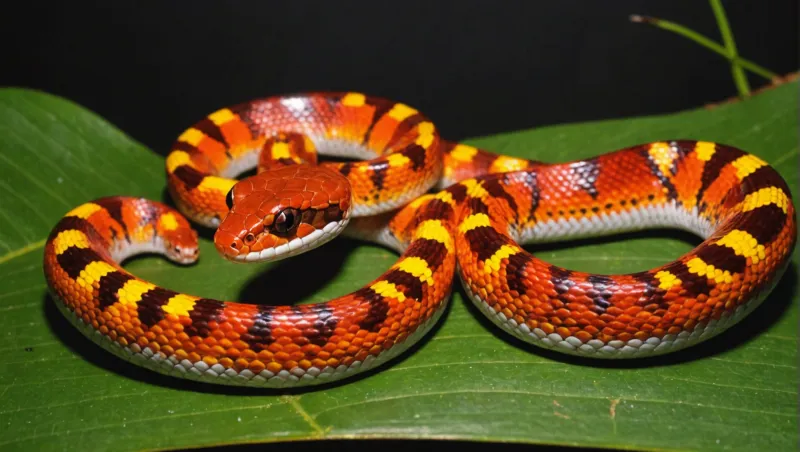
Hot and cold – your snake needs both! Create a temperature gradient with a warm side (85-88°F) and a cooler side (75-80°F). This temperature range mimics their natural environment and allows them to regulate their body temperature.
Under-tank heating pads work wonderfully when connected to a thermostat. Never use hot rocks – they can cause serious burns to your scaly buddy’s sensitive belly!
Choose The Right Substrate
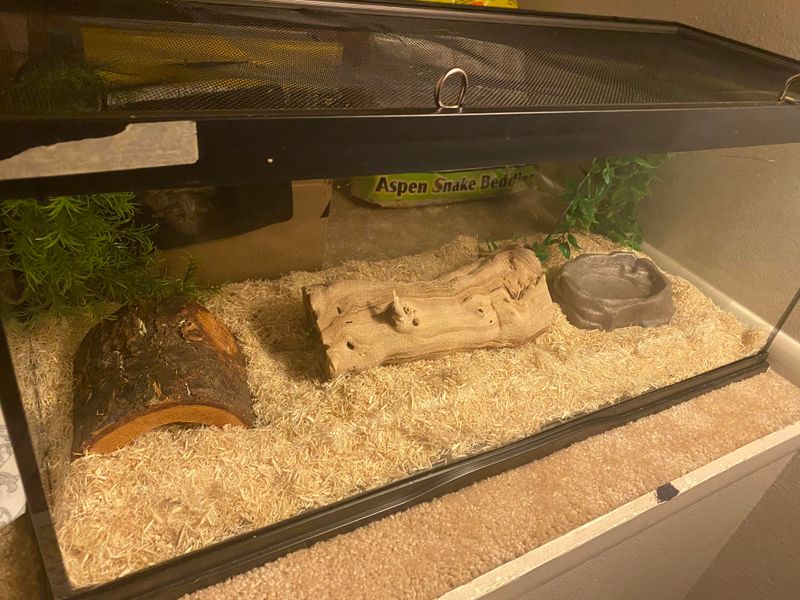
Aspen shavings steal the spotlight as the top bedding choice for corn snakes. These little wood pieces allow for natural burrowing behavior while controlling moisture and odor.
Avoid cedar and pine substrates at all costs! The aromatic oils can harm your snake’s respiratory system. Paper towels or newspaper make excellent temporary options during cleaning or for hatchlings when you need to monitor health closely.
Master Feeding Techniques
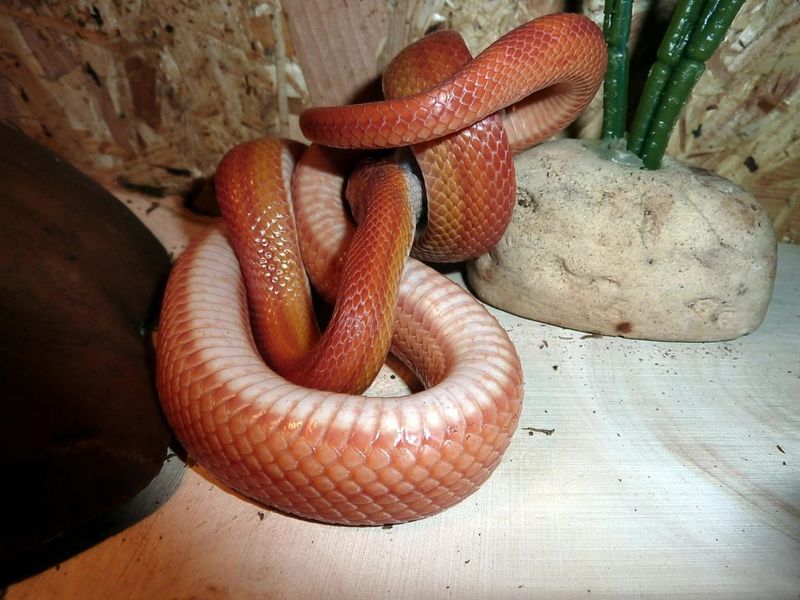
Frozen-thawed mice make mealtime simple and safe. Young snakes typically eat pinkie mice weekly, while adults graduate to adult mice every 10-14 days. Always thaw prey in warm water – never microwave!
Feed in a separate container to prevent substrate ingestion and reduce cage aggression. Watch for the telltale bulge after feeding – this means your snake had a successful meal and will need about 48 hours of quiet time to digest.
Provide Fresh Water Daily
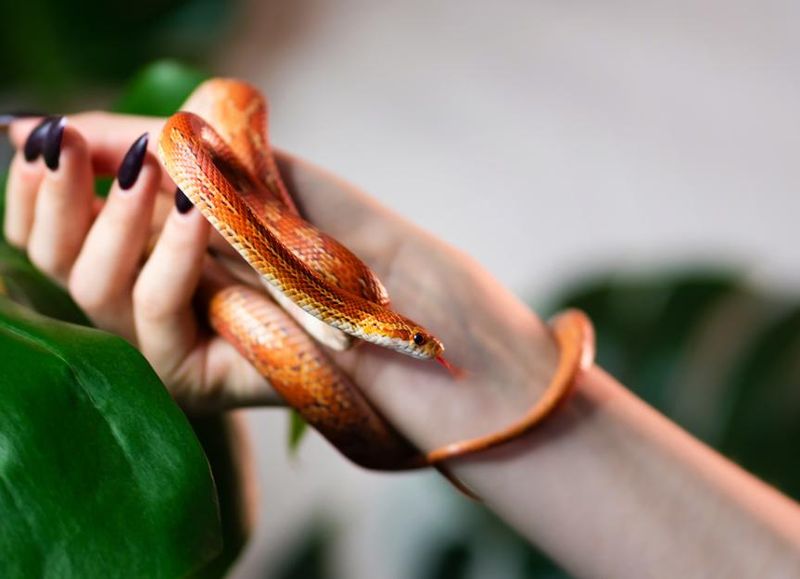
Heavy ceramic dishes prevent tipping during your snake’s explorations. The container should be large enough for partial soaking but not so deep that your snake risks drowning.
Snakes often soak before shedding to help loosen their old skin. You’ll find your corn snake taking surprise baths when you least expect it! Change water daily since they occasionally use their dish as a toilet after drinking.
Recognize Healthy Shedding Signs
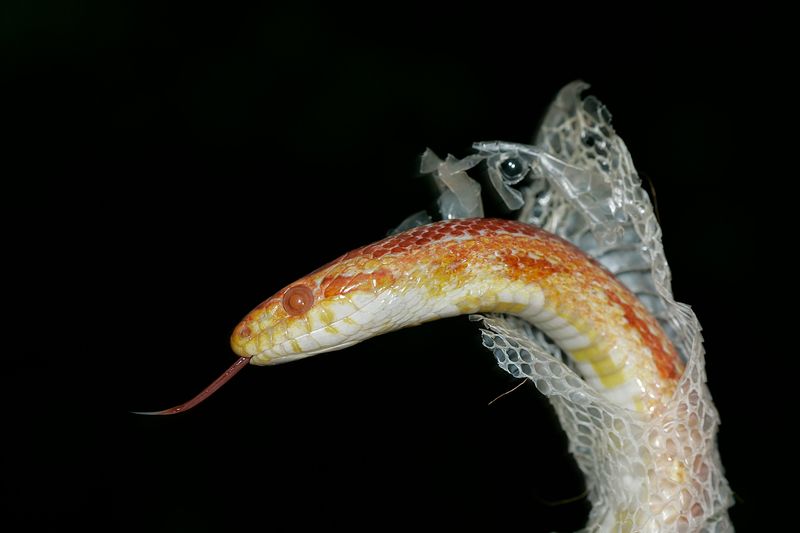
Cloudy blue eyes signal the beginning of a shed cycle. Your snake’s colors will appear dull for about a week before the old skin comes off in one beautiful piece – if humidity levels are correct.
Provide a humid hide box filled with damp sphagnum moss during shedding time. This special retreat helps prevent stuck shed, especially around the eyes and tail tip. A perfect shed looks like a snake-shaped ghostly sock turned inside out!
Handle With Confidence
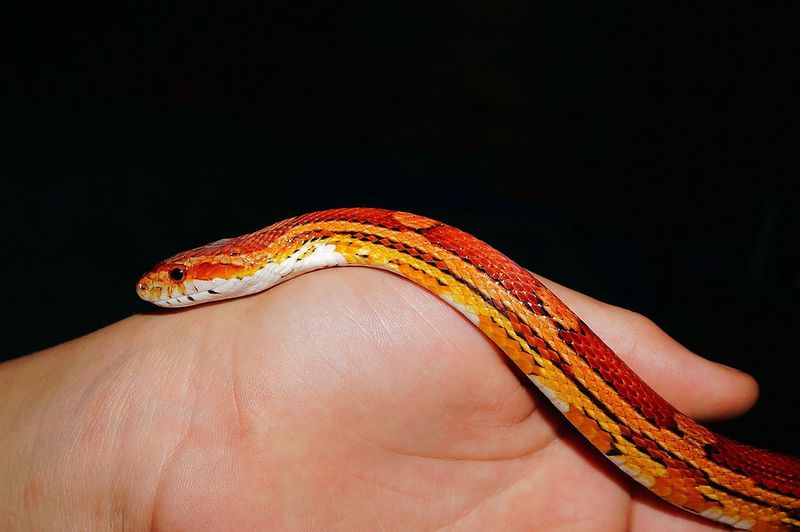
Support your snake’s body when lifting – never grab the middle or tail alone. Short, gentle handling sessions of 10-15 minutes build trust between you and your scaly friend.
Wait about two days after feeding before handling to prevent regurgitation. Snakes digest best when left undisturbed! Wash hands before and after each handling session to protect both you and your snake from potential bacteria transfer.
Spot Clean Daily, Deep Clean Monthly
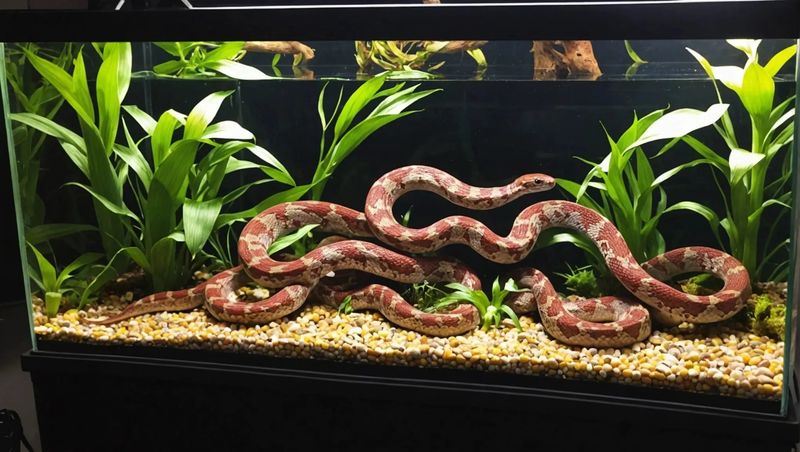
Remove waste and soiled substrate as soon as you notice it. Bacteria grows quickly in warm environments, potentially causing health issues for your slithery companion.
Every 4-6 weeks, transfer your snake to a secure temporary home and completely replace the substrate. Disinfect the entire enclosure with a reptile-safe cleaner, rinse thoroughly, and dry completely before adding fresh bedding and returning your snake to its sparkly clean home.
Monitor Health Consistently
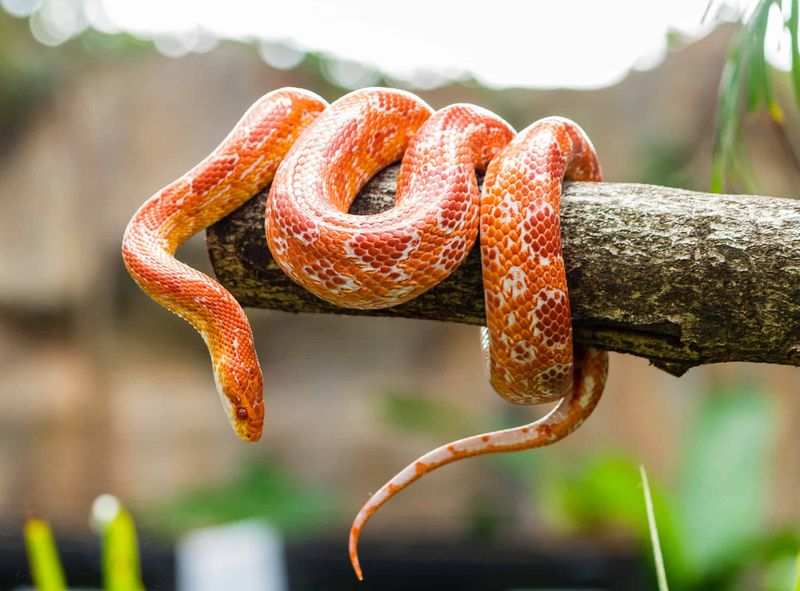
Bright, clear eyes and smooth scales indicate a healthy corn snake. Regular weight checks help track growth and ensure proper feeding schedules – a kitchen scale works perfectly for this task!
Watch for normal behaviors like tongue flicking, exploring at dusk, and regular shedding. Red flags include labored breathing, mucus around the mouth or nose, stuck shed, or refusal to eat for extended periods. A reptile vet specializing in snakes should examine your pet annually.
Prepare For Seasonal Behavior Changes
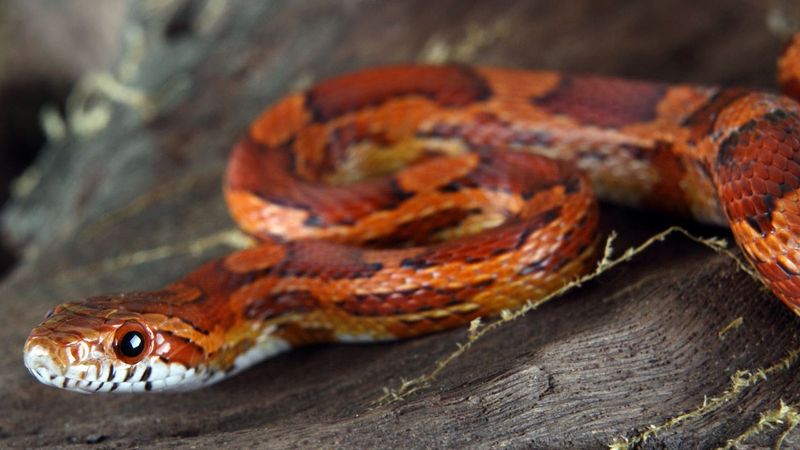
Winter brings a natural slowdown called brumation. Your snake may eat less, move around less, and spend more time hiding during cooler months – this is completely normal reptile behavior!
Males become more active during spring breeding season, sometimes refusing food while searching for mates. Females may show increased appetite as breeding season approaches. Understanding these natural cycles helps prevent unnecessary worry about your slithery companion’s changing behaviors.

